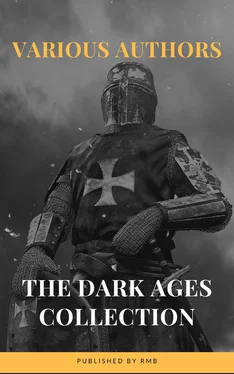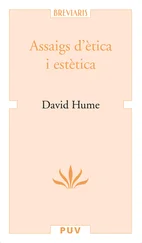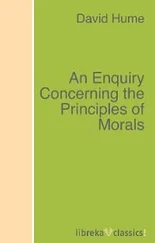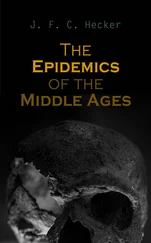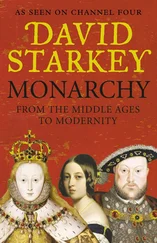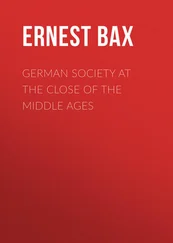The limitanei were under the command of dukes, the successors of the old legati pro praetore of the Augustan system. In the west the duke was subordinate to the Master of Foot; in the east to the Master of Soldiers in the military district to which his province belonged. 38
The Palatine legions were the successors of the old Praetorian guards, but Constantine or one of his predecessors organised guard troops who were more closely attached to the Imperial person. 39These were the Scholae, destined to have a long history. We associate the name of School with the ancient Greek philosophers, who gave leisurely instruction to their schools of disciples in Athenian porticoes. It was applied to Constantine’s guards because a portico was assigned to them in the Palace 40where they could spend idle hours waiting for Imperial orders. The Scholarians were all picked men, and till the middle of the fifth century chiefly Germans; mounted, better equipped and better paid than the ordinary cavalry of the army. There were seven schools at Constantinople, each 500 strong 41and commanded by a tribune who was generally a count of the first rank. 42We have already seen that the whole guard was under the control of the Master of Offices. Closely associated with the Scholarians was a special body of guards, called candidati from the white uniforms which they wore.
While the Scholarians and Candidates were in a strict sense bodyguards of the Imperial person and never left the Court except to accompany the Emperor, there was another body of guards, the Domestici, consisting both of horse and foot, who as a rule were stationed at the Imperial Court, but might be sent elsewhere for special purposes. 43They were under the command of Counts ( comites domesticorum ) who were independent of the Master of Soldiers. 44It will be observed that most of the new military creations of the third and fourth centuries had names indicating their close relation to the autocrat, comitatenses, soldiers of the retinue; palatines, soldiers of the palace; domestics, soldiers of the household.
The army of this age had a large admixture of men of foreign birth, and for the historian this perhaps is its most important feature. In the early Empire the foreigner was excluded from military service; the legions were composed of Roman citizens, the auxilia of Roman subjects. Every able-bodied citizen and subject was liable to serve. Under the autocracy both these principles were reversed. The auxilia were largely recruited from the barbarians outside the Roman borders; new troops were formed, designated by foreign names; and the less civilised these soldiers were the more they were prized. 45Some customs and words 46illustrate the influence which the Germans exercised in the military world. The old German battle-noise, the barritus , was adopted as the cry of the Imperial troops when they went into battle. The custom of elevating a newly-proclaimed Emperor on a shield was introduced by German troops in the fourth century. It would be interesting to know how many Germans there were in the army. The fact that most of the soldiers whom we know to have held the highest posts of command in the last quarter of the fourth century were of German origin speaks for itself.
The legions continued to be formed from Roman citizens; but the distinction between citizens and subjects had disappeared since the citizenship had been bestowed, early in the third century, upon all the provincials, and it was from the least civilised districts of the Empire, from the highlands of Illyricum, Thrace, and Isauria, from Galatia and Batavia, that the mass of the citizen soldiers were drawn. From a military point of view highly civilised provinces like Italy and Greece no longer counted. The legions and citizen cavalry ceased to have a privileged position. For instance, the auxilia on the Danube frontier, who were chiefly of barbarian race, were superior in rank to the legionary troops under the same command.
It was a natural consequence of this new policy, in which military considerations triumphed over the political principle of excluding foreigners, that the other political principle of universal liability to service should also be relinquished. It was allowed to drop. In the fifth century it had become a dead letter, and Valentinian III expressly enacted that “no Roman citizen should be compelled to serve,” except for the defence of his town in case of danger. 47
A third ancient principle of the Roman State, that only freemen could serve in the army, was theoretically maintained, 48and though it was often practically evaded and occasionally in a crisis suspended, 49it is probable that there were never many slaves enrolled.
If we examine the means by which the army was kept up, we find that the recruits may be divided into four classes. (1) There were the numerous poor adventurers, Roman or foreign, who voluntarily offered themselves to the recruiting officer and received from him the pulveraticum (“dust-money,” or travelling expenses), the equivalent of the King’s shilling. (2) There were the recruits supplied by landed proprietors from among their serf-tenants. This was a State burden, but it fell only on the estates in certain provinces. 50(3) The son of a soldier was bound to follow his father’s profession. But this hereditary military service fell into abeyance before the time of Justinian. (4) The settlements of foreign barbarians within the Empire were another source of supply. These foreigners ( gentiles ), incorporated in the Empire but not enjoying the personal rights of a Roman, 51were chiefly Germans and Sarmatians, and they were organised in communities under the control of Roman officers. They are found in Gaul, where they had the special name of laeti , 52and in the Alpine districts of Italy.
The Imperial army was democratic in the sense that the humblest soldier, whatever his birth might be, might attain to the highest commands by sheer talent and capacity. The first step was promotion to the posts of centenarius and ducenarius , who discharged the duties of the old centurions and our non-commissioned officers. 53Having served in these ranks the soldier could look forward to becoming a tribune, with the command of a military unit, 54and the efficient tribune would in due course receive the rank of comes .
In order to follow the history of the fifth century intelligently and understand the difficulties of the Imperial government in dealing with the barbarian invaders it would be of particular importance to know precisely the strength of the military forces at the death of Theodosius.
The strength of the Roman military establishment at the beginning of the third century seems to have been about 300,000. It was greatly increased under Diocletian; and considerable additions were made in the course of the fourth century. The data of the Notitia dignitatum would lead to the conclusion that about A.D. 428 the total strength considerably exceeded 600,000. 55We have, however, to reckon with the probability that the legions and other military units enumerated in the Notitia were not maintained at their normal strength and in some cases may have merely existed on paper. We may conjecture that if the army once actually reached the number of 650,000 it was not after the death of Theodosius, but before the rebellions of Maximus and Eugenius, in which the losses on both sides must have considerably reduced the strength of the legions. But if we confine ourselves to the consideration of the field army, there seems no reason to doubt that in A.D. 428 it was nearly 200,000 strong. It was unequally divided between east and west, the troops assigned to the west being more numerous. In Italy there were about 24,500 infantry and 3500 cavalry. 56
Читать дальше
